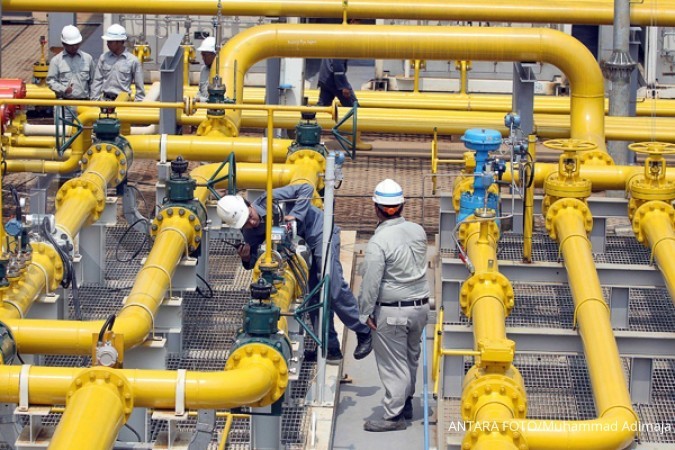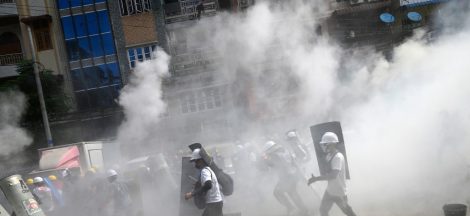Weak domestic demand, gas infrastructure hamper 2030 SKK Migas goal. Not enough growth in domestic gas demand is undermining the government’s upstream ambitions to ramp up production, as is the lack of progress in infrastructure development, a recent webinar hosted by the Upstream Oil and Gas Special Regulatory Task Force (SKK Migas) has heard.

Indonesia’s weak growth in gas demand, compounded by the slow expansion of gas pipelines, risks deterring the investments needed to double the natural gas output by 2030 to 12,300 million cubic feet per day (mmscfd), executives from the Society of Indonesian Petroleum Engineers (IATMI) and the Indonesian Petroleum Association (IPA) said during the webinar on Nov. 20.
The two industry associations were highlighting the key obstacles to achieving SKK Migas’ aim to double gas output over the next 10 years, a plan meant to spur domestic industrial growth and exports to reduce the gaping oil and gas trade deficit.
“Gas needs a market,” said IATMI secretary-general Hadi Ismoyo, pointing out that “we were too complacent with fuel [infrastructure], such that we forgot gas infrastructure”.
Statistics Indonesia (BPS) data shows that Indonesia imported US$1.08 billion in oil and gas in October this year, down 38.54 percent year-on-year (yoy) from October 2019, prior to the emergence of COVID-19 anywhere in the world. In comparison, Indonesia’s oil and gas exports reached $630 million in October 2020, dropping 26.89 percent yoy from October last year.
In its bid to jack up the gas supply, SKK Migas has named four gas-rich upstream projects as “national strategic projects”, making them eligible for more government incentives and attention. It also has many more gas-rich projects, albeit smaller ones, in the pipeline.
However, domestic growth in gas demand remains relatively weak. Annual gas consumption grew an average 1.2 percent between 2008 and 2018, slower than the 5.1 percent average in the Asia-Pacific, according to the latest BP Statistical Review.
IATMI’s Hadi stressed that Indonesia’s gas infrastructure programs faced many development hurdles and thus limited market growth.
A case in point was state engineering firm PT Rekayasa Industri (Rekind), which withdrew from the Cirebon-Semarang gas transmission pipe project in October after 14 years of zero progress in securing a reliable gas supplier and in determining an economical toll fee.
The multimillion-dollar project was slated to transmit between 350 mmscfd and 500 mmscfd of natural gas to Central Java, a major manufacturing province.
Manufacturers are the biggest domestic market for natural gas, followed by power producers using gas-fired power plants, and then homeowners and small businesses for cooking gas.
Meanwhile, IPA executive director Marjolijn Wajong added that shipping natural gas over long distances, whether to Indonesian islands or other countries, might not be an option for some companies due to economical reasons.
Transporting gas by sea requires cooling it into Liquefied Natural Gas (LNG) to maximize profits. Even then, the additional costs of processing LNG keep gas markets regionalized, as opposed to the globalized oil market. Oil does not require cooling for transport.
Marjolijn underlined that “if companies also have to [factor in] long-distance gas transportation costs, they will find [such projects] uneconomical”.
She recommended that the government provide an analysis of potential local gas buyers for new upstream oil and gas block auctions to attract investment.
SKK Migas’ project and facilities management head, Luky Yusgiantoro, acknowledged the challenge of balancing demand and supply to achieve the target output by 2030.
“Upstream and downstream players need to sit together and walk together,” Luky said during the webinar. He added that close-knit cooperation was particularly needed, because gas demand and prices would fluctuate over the coming months as the world rode out the pandemic. Weak domestic demand, gas infrastructure hamper 2030 SKK Migas goal (Norman Harsono, The Jakarta Post)





 German Economy Grew By 8.5 Percent in Third Quarter, but Recession Fears Grow
German Economy Grew By 8.5 Percent in Third Quarter, but Recession Fears Grow 